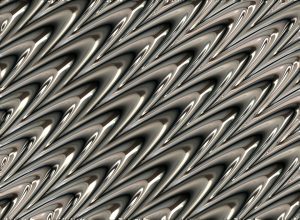 Accounting for approximately 8% of the Earth’s crust, aluminum is the world’s third-most abundant metal. In 2016, global production of aluminum reached an all-time high of 58.8 million tons — and there’s no signs of production slowing down anytime soon. With aluminum being used to make everything from automotive frames and engines to spacecraft, window frames, electrical wires and more, global production will likely increase in the future. However, some manufacturers process their aluminum to improve its properties by anodizing it.
Accounting for approximately 8% of the Earth’s crust, aluminum is the world’s third-most abundant metal. In 2016, global production of aluminum reached an all-time high of 58.8 million tons — and there’s no signs of production slowing down anytime soon. With aluminum being used to make everything from automotive frames and engines to spacecraft, window frames, electrical wires and more, global production will likely increase in the future. However, some manufacturers process their aluminum to improve its properties by anodizing it.
What is Anodizing?
Anodizing is a passivation process that involves the application of chemicals and electricity to form a thick layer of oxide on the surface of metals. Manufacturers anodize aluminum by submerging aluminum in a bath of acidic anodizing chemicals. An electrical current is then applied to the submerged aluminum, which releases hydrogen. This chemical reaction triggers the formation of oxygen on the surface of the metal creating a natural layer of oxide over the surface of the aluminum. It’s a highly technical process that requires specific amounts of acid, electricity and submersion duration. When performed correctly, anodizing an aluminum product can increase the durability of a product.
Anodized Aluminum vs Non-Anodized Aluminum
The fundamental difference between anodized aluminum and non-anodized aluminum is that the former has a layer of oxide over the surface, whereas the latter does not. From a practical standpoint, anodized aluminum offers several benefits. The main benefit of anodized aluminum is greater protection from corrosion. Aluminum, whether anodized or not, isn’t susceptible to rust. Even when left outdoors under the rain, aluminum will never rust because it doesn’t contain any iron. Nonetheless, it can still corrode, which is why manufacturers often anodize their aluminum. The layer of oxide this process forms over aluminum creates a barrier of protection that discourages corrosion.
Anodizing also allows manufacturers to dye the surface of their aluminum. Dyes can be added to the acid bath in which aluminum is exposed to achieve different colors. There are other ways to dye aluminum, but anodizing creates a stronger bond since the dye is located in the oxide layer covering the surface.
Can Other Metals Be Anodized?
Aluminum isn’t the only metal that’s anodized, magnesium, zinc, niobium, titanium and tantalum. Titanium is the second most common anodized metal, it is often anodized using the Aerospace Materials Standards (ASM) 2487 and 2488. The end result is a layer of oxide covering titanium with a thickness of about 30 nanometers to a few micrometers. Other metals that can be anodized include magnesium, zinc, niobium, and tantalum.



